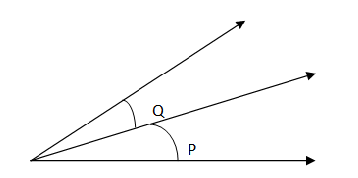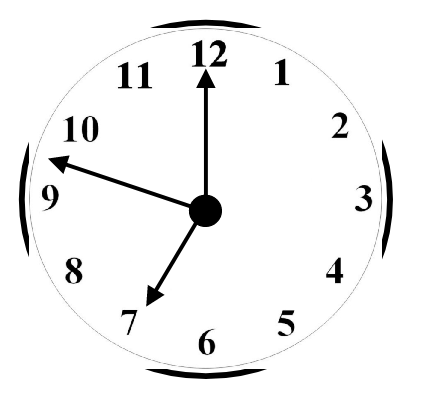
Discuss the importance and use of adjacent angles in day-to-day life.
Answer
454.5k+ views
Hint:Hint: In this type of descriptive question we define the technical terms first like, Adjacent angles in this case. Then we discuss the properties of adjacent angles and elaborate its use and importance while reflecting upon the implications of it in real life.
Complete solution step by step:
We firstly define what adjacent angle is Adjacent angles: Two angles which are not overlapping and have a common vertex and a common side between the two. We can understand it in a better way by this figure-

In the figure$\angle P\,{\text{and}}\,\angle Q$are adjacent angles because they share the same vertex and one side is common between the two.
These conditions should be satisfied to ensure the angles are adjacent:
1) Common side/arm
2) Common vertex
3) No overlapping of the two angles
4) No common interior point
Mathematics is the language of nature and angles are no less prevalent in our surroundings. Angles can be seen everywhere in our life but we don’t see them with our analytical lens. Be it an opened book or a window of our house shapes, our world is full of angles.
Adjacent angles can be seen and observed when we look at hands of a clock denoting different time. We need three arms to make an adjacent angle and in a clock we have three hands.
For example, when a clock shows time as 7 AM and the arm which shows seconds in a clock if it is between 7 to 12 then it makes an adjacent angle as shown below

Some other examples of adjacent angles would be - Cycle wheels, Scissors when arms are opened, Book when opened makes adjacent angles with both the covers and pages inside etc.
Notes: If the sum of two adjacent angles is $180^\circ $then they are known as linear pairs of angles. And in this case the non common arms form a line. An example of this can be a T-point on a road which makes adjacent angles at the same time a linear pair of angles.
Complete solution step by step:
We firstly define what adjacent angle is Adjacent angles: Two angles which are not overlapping and have a common vertex and a common side between the two. We can understand it in a better way by this figure-

In the figure$\angle P\,{\text{and}}\,\angle Q$are adjacent angles because they share the same vertex and one side is common between the two.
These conditions should be satisfied to ensure the angles are adjacent:
1) Common side/arm
2) Common vertex
3) No overlapping of the two angles
4) No common interior point
Mathematics is the language of nature and angles are no less prevalent in our surroundings. Angles can be seen everywhere in our life but we don’t see them with our analytical lens. Be it an opened book or a window of our house shapes, our world is full of angles.
Adjacent angles can be seen and observed when we look at hands of a clock denoting different time. We need three arms to make an adjacent angle and in a clock we have three hands.
For example, when a clock shows time as 7 AM and the arm which shows seconds in a clock if it is between 7 to 12 then it makes an adjacent angle as shown below

Some other examples of adjacent angles would be - Cycle wheels, Scissors when arms are opened, Book when opened makes adjacent angles with both the covers and pages inside etc.
Notes: If the sum of two adjacent angles is $180^\circ $then they are known as linear pairs of angles. And in this case the non common arms form a line. An example of this can be a T-point on a road which makes adjacent angles at the same time a linear pair of angles.
Recently Updated Pages
How do you factor x2 + x 20 0 class 9 maths CBSE

How do you solve y6x and 2x+3y20 using substitutio class 9 maths CBSE

Chipko movement originated in Gopeshwar in A 1953 B class 9 biology CBSE

The adjacent sides in the parallelogram are supplementary class 9 maths CBSE

The compound used in plastic industry is A Vinyl acetate class 9 chemistry CBSE

How do you solve for y in 2left y dfrac12 right 4left class 9 maths CBSE

Trending doubts
According to Bernoullis equation the expression which class 11 physics CBSE

Draw a diagram of nephron and explain its structur class 11 biology CBSE

Differentiate between calcination and roasting class 11 chemistry CBSE

A solution of a substance X is used for white washing class 11 chemistry CBSE

What is spore formation class 11 biology CBSE

10 examples of friction in our daily life




